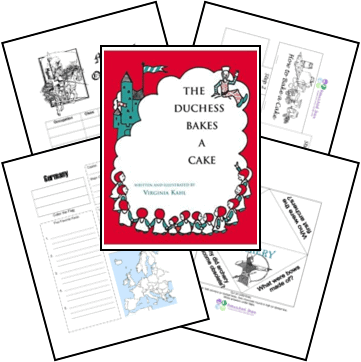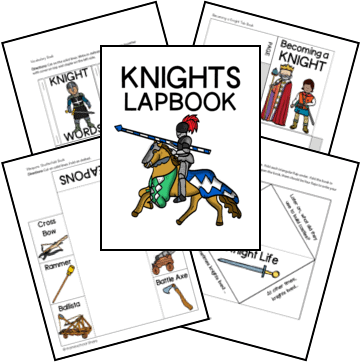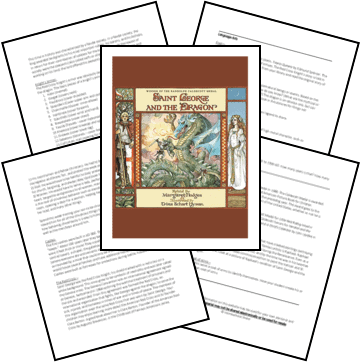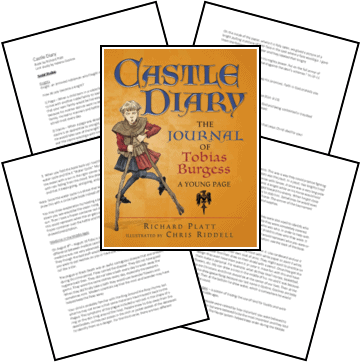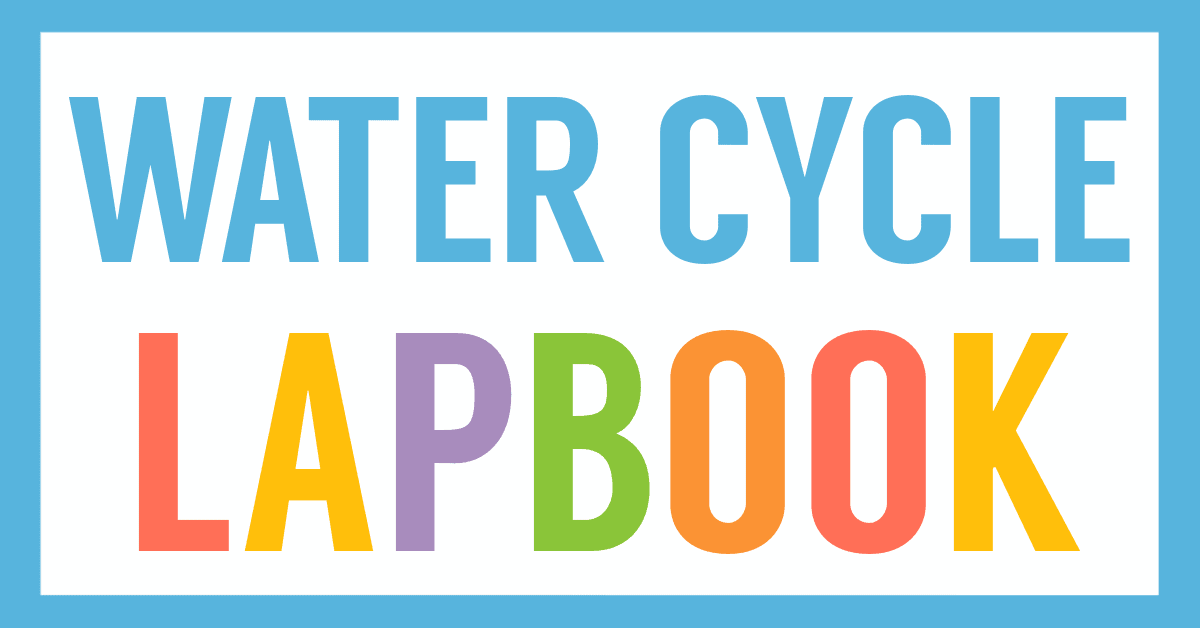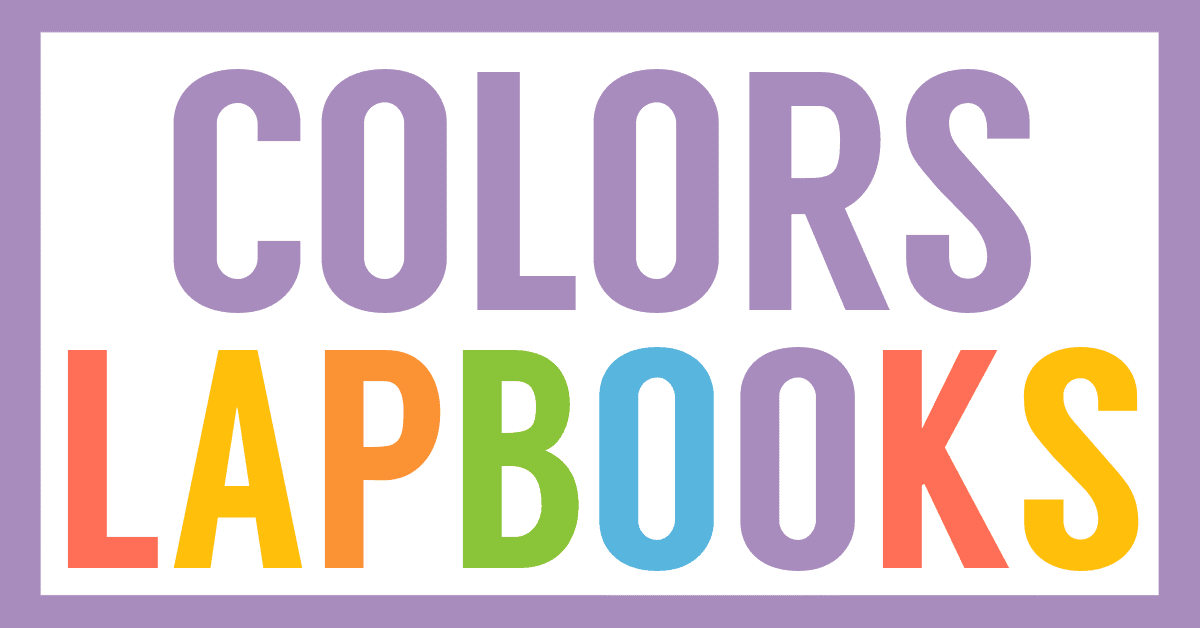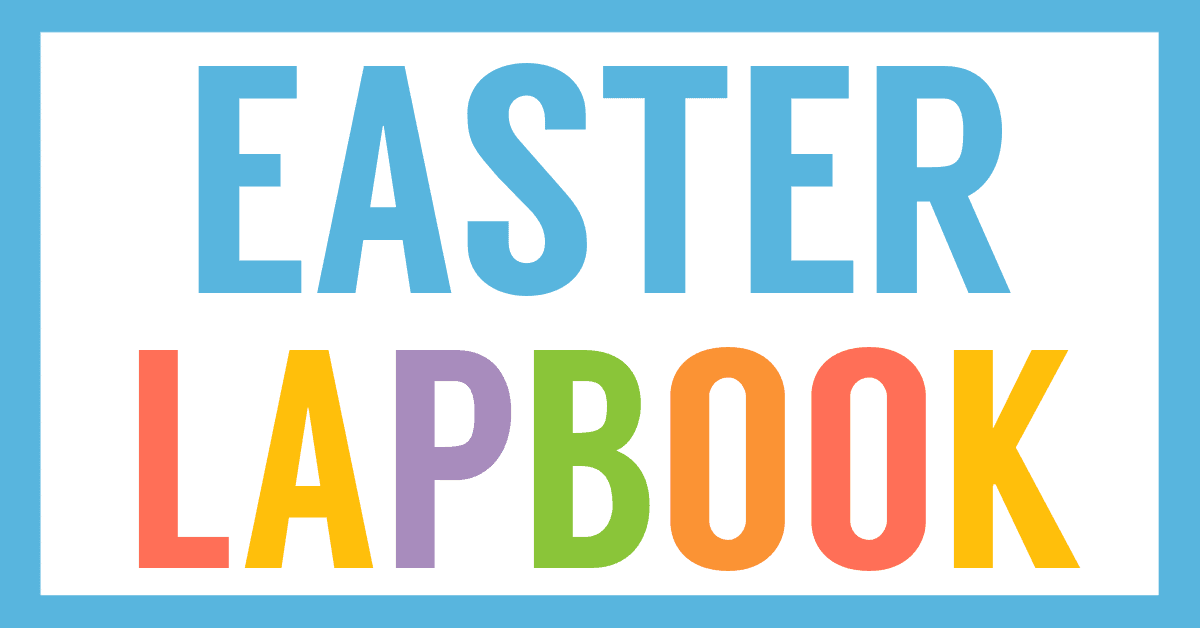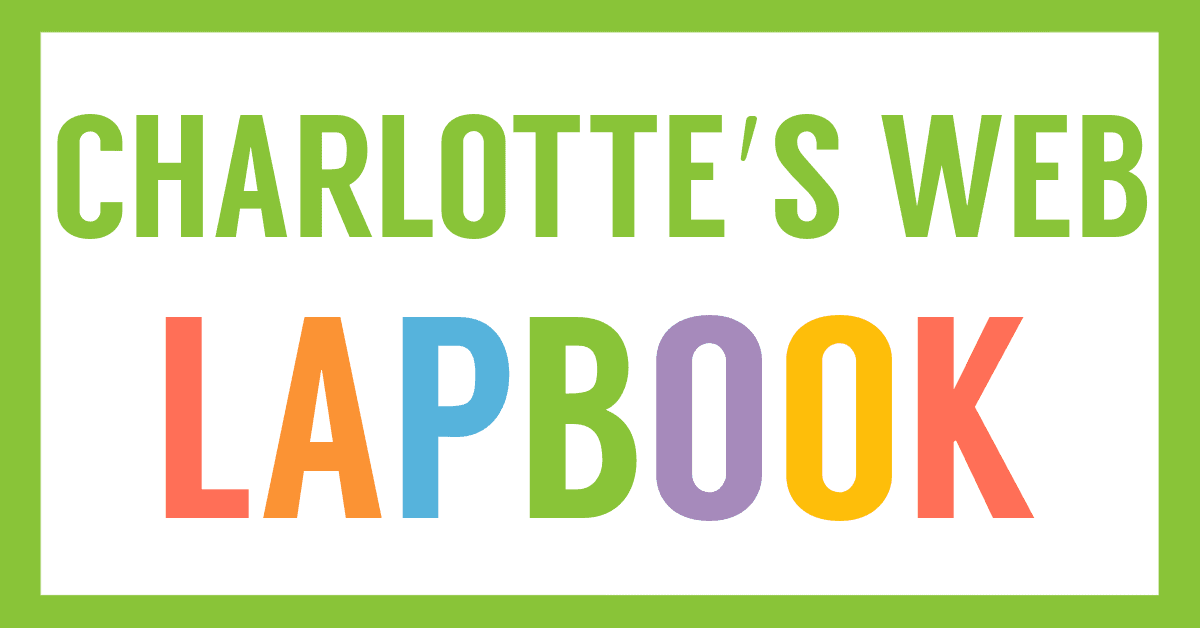Affiliate Disclaimer
We sometimes use affiliate links in our content. This won’t cost you anything, but it helps us to keep the site running. Thanks for your support.
A bored duchess decides to bake a cake although she has limited culinary expertise. The cake rises to unexpected heights and although she “pushed it and pummeled it, punched it and pat on it, she poked it, pinched it–and finally sat on it” she found herself among the clouds.
The story continues as everyone tries to get her down. Finally, the youngest of the thirteen daughters gets hungry and thereby discovers the solution.
This fun story is the base for our The Duchess Bakes a Cake unit study and lapbook created by Wende.
The Duchess Bakes a Cake Unit Study Lessons
This unit study includes lessons and printables based on the book The Duchess Bakes a Cake by Virginia Kahl.
Here are some sample lessons from the The Duchess Bakes a Cake Unit Study:
Science: Leavening
The Duchess sure did put a lot of leaven in her cake! Leaven is the ingredient in cakes, cookies, or breads that makes them rise. There are different leavening agents, the most common being baking soda, baking powder, and the Duchess’ choice, yeast.
Yeast is in the air all around you. It was first discovered by the Ancient Egyptians about 5,000 years ago. When they made dough, and let it sit a bit, they discovered that it took on a different smell, and started to bubble and rise. They then discovered that if they took bits of the fermented dough, they could add it to fresh dough to make it too rise. They didn’t have a microscope to see it, but they came to the conclusion that the tiny microbes from the air were alive, found their way into the dough, and if continually fed, they would continue to grow and reproduce.
These tiny microbes were later named yeast, and were discovered to be single-celled fungi. The cells are egg shaped, and very, very tiny. Each cell “buds” into a new cell, making more cells.
The kind of yeast that bakers use is a “sugar-eating fungus.” This species is very strong and capable of fermentation, which is what makes the cake rise. Yeast needs sugar to grow. As yeast eats the sugar (remember, the Duchess put a lot of sugar in her cake too!), and through the act of fermentation, it produces a gas called carbon dioxide.
The gas is surrounded by the liquids in the cake batter and can’t be released, so it just grows and grows, making the batter rise.
Language Arts: Author Study
Virginia Kahl was born on February 18, 1919, in Milwaukee, Wisconsin. She studied art at Milwaukee-Downer College, earning a Bachelors of Art degree in 1940. Virginia loved books as well as art, and got her first job as a library assistant in Milwaukee during the 1940’s. From 1948 until 1955 she served as a librarian for the U.S. Army in Berlin, Germany and then Salzburg, Austria.
She returned to the United States to complete her master’s degree in library science at the University of Wisconsin in 1957. From 1958 until her retirement in 1993, Kahl was a librarian and library director at both public schools and public libraries.
Besides her successful library career, Kahl enjoyed art and writing, publishing over a dozen children’s picture books notable for their lighthearted stories with touches of fantasy. She credits her experiences in Europe as influencing her writing and illustrating career. This is apparent in the illustrations depicting European settings and in the names she has chosen for the numerous picture book characters.
Poetic Devices: Repetition
Repetition is the repeating of words or phrases in a poem to create a sense of rhythm. Ask your child what phrase or phrases were repeated throughout the poem. “Lovely, light, luscious delectable cake” was repeated six times. Use this phrase for copywork, as desired.
Cooking: Baking a Cake
Cakes are a favorite dessert of many people, especially children. They add festivity to many special occasions, and can make a plain meal something special. Cakes contain flour, sugar, eggs, liquid, and salt. Shortened cakes also contain fat and a leavening agent. Unshortened cakes contain no fat. Discuss with your child the purpose of each ingredient.
Flour – flour, from ground up wheat berries, gives structure to the cake. The gluten that develops when flour is moistened and mixed is what traps the leavening gasses.
Sugar – gives sweetness to the cake, and when used, feeds the yeast. Various sugars can be used in a recipe, including white sugar, brown sugar, or honey.
Eggs – While the egg whites are a protein that give extra structure to the cake, the yolk add a nice color and flavor.
Liquid – liquids provide moisture and help to mix ingredients together. Milk is the most often used liquid in cake recipes, but sometimes water, buttermilk, or fruit juice may be called for.
Salt – provides flavoring
Fat – tenderizes the gluten; fats used include butter, vegetable shortening, coconut oil, etc.
Leavening – Shortened cakes are leavened with baking powder, baking soda, and sometimes yeast. Unshortened cakes are leavened by air and steam created by whipped egg whites.
Flavorings – flavorings are not essential, but make a cake taste good. Spices, extracts, fruits, and/or nuts all can add a nice flavor to cakes.
Successful preparation of a cake depends on proper measuring, mixing, and baking. All ingredients need to be carefully measured, because too much or too little of any one ingredient can drastically change the finished product. Cake batters need to be properly mixed. Under mixing can leave clumps and overmixing can make a cake tough.
Baking the cake in the proper size pans and at the correct temperature will determine the success or failure of your cake. If the temperature is too high, the cake will burn, and if too low, the cake will dry out. Ask your child where the Duchess went wrong. Did she measure correctly? Did she mix the right way? What about baking?
The Duchess went about it all wrong and got herself into quite a predicament! Show your child the correct way to bake a cake, using a favorite or new recipe.
You can grab a copy of the entire The Duchess Bakes a Cake Unit Study and Lapbook in an easy-to-print file at the end of this post.
The Duchess Bakes a Cake Lapbook Printables
In addition to the unit study lessons, this file also includes mini-books for your student to create a The Duchess Bakes a Cake lapbook.
- Label a Bow and Arrow Flap Book
- Archery Dos and Don’ts Simple Fold Book
- Archery Envelope Fold
- People Who Don’t Think Simple Fold Book
- Yeast Layer Book
- Catapult Mini-book
- Prepositions Strip Book
- Alliteration Flap Book
- Copywork Pages and Mini-books (various options to choose from)
- The Cast at the Castle
- Skip Counting by 3s Book
- Good Measure Pull-tab Book
- Dozens Flap Book
- How to Bake a Cake Tab Book
- Middle Ages Mini-book
- Austria Report Form & Pocket
- Germany Report Form & Pocket
- And more!
How to Get Started with Your The Duchess Bakes a Cake Unit Study & Lapbook
Follow these simple instructions to get started with the The Duchess Bakes a Cake Unit Study:
- Buy a copy of the book, The Duchess Bakes a Cake, or borrow one from your local library.
- Print the The Duchess Bakes a Cake unit study.
- Choose the lessons you want to use with your student (a highlighter works great for this).
- Choose and prepare the lapbook printables you want to use with your student.
- Enjoy a week of reading, laughing, and baking with The Duchess Bakes a Cake.
Get Your Free The Duchess Bakes a Cake Unit Study & Lapbook
Simply click on the image below to access your free The Duchess Bakes a Cake Unit Study and Lapbook.

